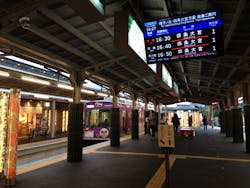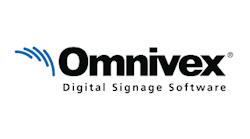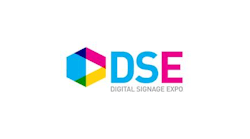Many transit companies today are collecting large volumes of data at an increasing rate. Whether it is — arrival/departure information, GPS, news & weather, or emergency notifications — this data can be optimized to create a personalized experience for visitors or passengers. By utilizing this vast amount of untapped data using a sophisticated digital signage platform, organizations will have the ability to breakdown information silos, increase sales and gain competitive edge.
Gone are the days of paper signs and delays in getting updated information out to travelers. We live in a real-time world and travelers expect real-time, relevant information at their fingertips. Visual communications, using devices like digital signs and interactive kiosks, can enhance passenger travel experience by helping people get to where they need to go safely, efficiently and effectively. Equipping your passengers with the right information, at the right time can ensure a positive experience in an environment that demands real-time sensitive information.
By optimizing data and using visual communications transportation organizations can:
- Alleviate perceived wait times
- Enhance travel experiences
- Engage passengers with news, weather and other interesting programming
- Deliver real-time location-based information, such as arrival/departure times, cancellations and delays, or service stoppages
- Improve operations by reducing the workload of employees
- Keep passengers safe; emergency notifications can interrupt regularly scheduled content
- Be a “travel guide” through interactive wayfinding kiosks
There are a variety of ways in which optimized data can be used to enhance the transit customer’s experience or add tangible value to an existing stream of revenue. A couple of cases in point:
Flam Railway, Norway
Flamsbana is a spectacular and scenic train journey through the Norwegian fjord landscape. It is one of the steepest railway lines in the world running on traditional tracks. The train journey runs through steep mountains, 20 tunnels, breathtaking waterfalls and beautiful scenery. The train stops near the top of the mountain to allow passengers to walk out on a platform next to one waterfall that runs under the train. 600,000 tourists ride the train each year, many arriving at the docks in Flåm on large cruise ships. They board the train at sea level and climb to the top of the mountain where they can connect to the Oslo-Bergan line.
Flamsbana is a major tourist destination in Norway. The small picturesque village of Flåm sits in a natural harbor at the mouth of the Aurlandsfjord with shops, hotels and restaurants. On the docks are outdoor kiosks with scheduling information and the current status of incoming ships. When you enter the Flåm rail station, you are presented with interactive wayfinding displays to help you navigate the area or learn about available services. In the retail shops are large displays promoting new or featured products. Scheduling information is available throughout the facility on strategically located displays. When you enter the ticketing area, you are greeted by a large 3x3 video wall promoting the area and things to do in the region.
By implementing a digital software platform, they were able to use live data to drive content at each stop independently. Since the data is centralized on one server, new information could be pushed to any display that requires it at any time. By optimizing this data, Flam Railway was able to provide an end-to-end experience for visitors engaging them at different points along the trip with a consistent brand. Flamsbana continues to win awards as one of the world’s best train experiences year-round.
Lamar Transit
Founded in 1902, Lamar has more than 70 transit franchises that reach audiences across the United States, Canada and Puerto Rico through billboards, digital billboards, bus shelters, benches and buses. Lamar operates more than 150 outdoor advertising companies in more than 40 states and Puerto Rico. The company is also a leader in the highway logo sign business, with operations in 19 states and Canada.
In Vancouver, Lamar established Lamar Transit Advertising Canada to manage digital signage networks throughout the metro area. Vancouver, British Columbia is one of the fastest growing regions in North America, featuring an extensive public transit system called TransLink (officially recognized as the South Coast British Columbia Transportation Authority). The system includes ferries, buses, trains and subways and is used by more than 562,000 average combined weekly commuters.
Built on an advertising model, Lamar’s decision to implement a digital signage platform was driven by the pertinent data related to travel. By optimizing information such as the weather, data is able to drive the advertisements with relevancy, and revenue that was generated was able to help offset the cost of the signage network. They were also able to:
- Immediately deliver messages to all commuters in the event of a security threat or emergency situation
- Display service announcements or security hazards that could interrupt or delay their travel plans
- Generate revenue through advertising
Doug Bannister is CEO and CTO of Omnivex.
He is considered by many as a visionary in the digital signage space. In his role as CEO and CTO, Bannister is responsible for the long-term product architecture and the overall vision for Omnivex. He has always maintained direct responsibility for the architecture of the software to ensure the product remains at the forefront of the industry. Combined with his vision, leadership and experience as an entrepreneur in the LED sign market, he has used his understanding of customer requirements and knowledge of technology to create one of the leading software solutions for the digital signage industry.
Omnivex is a member of the Digital Signage Federation, the only independent, not-for-profit trade organization serving the digital signage industry. The DSF supports and promotes the common business interests of worldwide digital signage, interactive technologies and digital out-of-home network industries. To learn more, go to www.digitalsignagefederation.org




